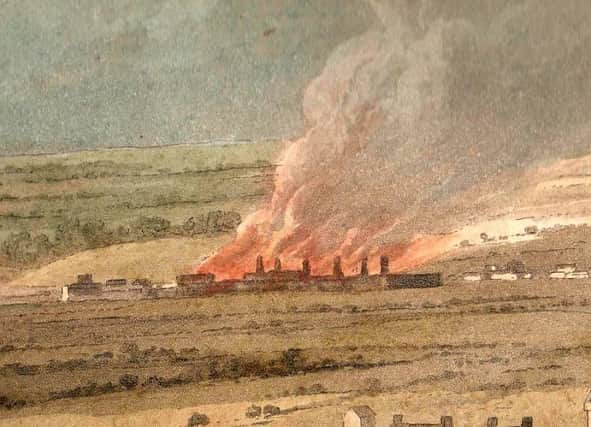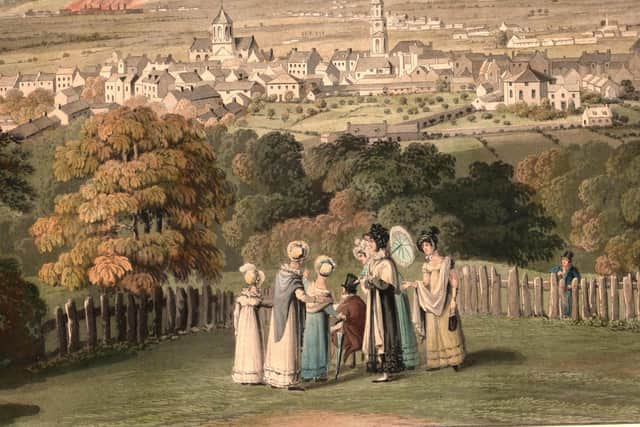Looking back with Ian Scott on life in Falkirk two centuries ago in 1824


I am returning to the topic this week because the drawing was completed in 1824 exactly two centuries ago – it is probably the earliest detailed image of the town to survive and as such it is of great interest to historians and, I would imagine, to every Falkirk bairn. According to the label on the back, my one was purchased in 1923 by a James MacIntyre of Comely Park from John Orr, a second hand bookseller of George Street Edinburgh.
The eminent artist was a Londoner called John Clark who was in the process of completing a series of similar drawings of various Scottish towns for publication and sale by Smith and Elder of Fenchurch Street London. According to their prospectus it was “engraved in the finest style of aquatints on a scale of 22 by 16 inches” and “exquisitely coloured on the spot” by the artist. Stirling, Edinburgh, Perth, Greenock and Dumbarton were among the 13 towns on the list and each print cost 10 shillings and 6 pence which made them a luxury item in 1824.
Advertisement
Hide AdAdvertisement
Hide AdMr Clark chose as his vantage point a spot within Callendar policies called Henry’s Hill which then gave an unrivalled view of the town looking north. He could not have come at a better time either because Falkirk was still very much a small market town although one that was on the up and up with several new buildings prominent in the drawing. The earliest of these is the Tattie Kirk in Cow Wynd built in 1806 as a place of worship of a breakaway congregation from the Church of Scotland. It is now a beauty parlour. In the centre stands the town steeple which was just ten years old when the artist arrived. The previous building had been demolished in 1804 because it was leaning over Pisa style and there were fears that it would tumble down on the bairns. The new one will be open for visits once again from April 27 on every Tuesday and Saturday from 10am to 4pm.


Just to the left is Falkirk Parish Church with its surviving medieval square tower and octagonal bell tower of 1738 but with the brand new sanctuary behind opened for worship in 1811. The other buildings are long gone but the image gives us a good idea of the number, scale and style of the houses, workshops and gardens.
But what makes the drawing of extra special interest are the flaming furnaces of Carron Ironworks in the background. Here for the first time we have a glimpse of the iron founding future which was about to transform the empty lands of Bainsford and Grahamston. It captures that moment when Scotland as a whole was about to fully enter the industrial age after centuries of dependence on agriculture.
In the foreground, surrounding the artist are a group of ladies wearing the dress of the period and I once thought they were a true image of the ‘belles of Falkirk’. Alas I forgot about artistic licence. A year or so ago I spotted another of John Clark’s engravings in a house in Edinburgh and sure enough the identical group were once again in attendance. Of course they may well have been the spirited Falkirk girls following the artist round the country!
Comment Guidelines
National World encourages reader discussion on our stories. User feedback, insights and back-and-forth exchanges add a rich layer of context to reporting. Please review our Community Guidelines before commenting.